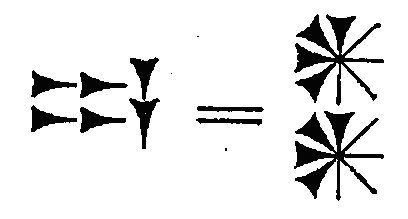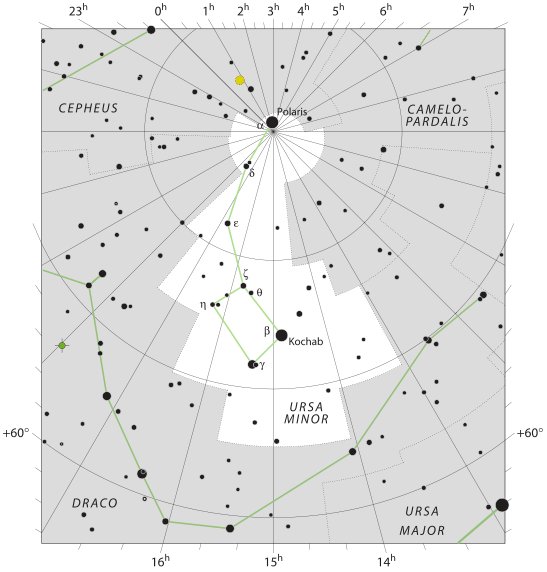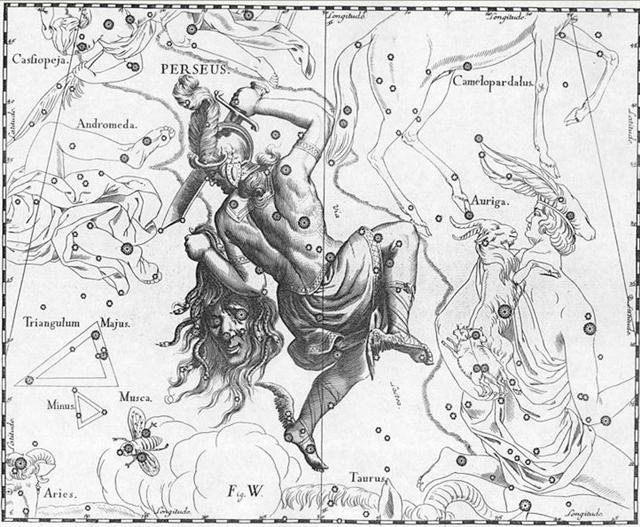In the C text, and according to my assumed time-frame for rongorongo, the Sun was
should have been at the line for right ascension
day *229 (= 365 - 136) in November 5, with the Full Moon having risen at the star Bharani 5
days earlier,
in October 31:
| manu rere - kua rere
ga manu - ki te ragi |
eaha te nuku erua |
koia kua huki |
e niu tu |
ki te
ariki - e ka hua ra tona rima |
8 |
|
Ga. Preposed plural marker of
rare usage. 1. Sometimes used with a few nouns denoting
human beings, more often omitted. Te ga vî'e, te ga
poki, the women and the children. Ga rauhiva
twins. 2. Used with some proper names. Ga Vaka,
Alpha and Beta Centauri (lit. Canoes). Vanaga.
Gaa. Gaaha, to burst, to become
ruptured, to have a discharge of pus, of blood. Ku
gaaha te toto o te ihu. He had a nose-bleed. E
û'i koe o gaaha te îpu. Be careful not to break the
bottle (lit. look out lest the bottle burst). E tiaki
á au mo gaaha mai o te harakea. I shall wait for the
abcess to burst. Gaatu, totora reed. Vanaga. To
break, to split, to crack, to rive; fracture, fissure,
break, crack, crevice (gaaha); niho gaa,
toothache, broken teeth; gaamiro (miro,
ship) shipwreck; gaàpu (pu 2), abortion;
poki gaàpu, abortive child. T Mq.: naha,
nafa, split, fissure. Ta.: aha, afa,
crack fissure. Gaatu 1. Bulrush, reed. 2. (gatu).
Churchill. |
 |
 |
 |
 |
 |
|
Cb1-12
(392 + 12) |
Cb1-13 |
Cb1-14 |
Cb1-15
→ Mercury |
Cb1-16 (408) |
|
CLOSE TO THE FULL
MOON: |
|
April 28 (4
* 29½) |
29 |
30 |
May 1 (11 *
11) |
2 (2 * 61) |
|
ν Arietis
(38.5), δ, ε Ceti (38.8) |
μ Arietis (39.4),
HEAD OF THE FLY = 35 Arietis
(39.6),
KAFFALJIDHMA = γ Ceti,
θ Persei (39.8) |
π Ceti, ο
Arietis (40.0),
ANGETENAR = τ¹ Eridani,
μ Ceti (40.2),
RIGHT WING = 39 Arietis
(40.9) |
Bharani-2 (The Bearer) /
Stomach-17 (Pheasant)
π Arietis
(41.2),
MIRAM = η Persei
(41.3),
BHARANI
= 41 Arietis
(41.4), τ²
Eridani, σ Arietis (41.7) |
TA LING
(Great Mound) = τ Persei
(42.4)
*1.0 = *42.4 - *41.4
|
 |
|
'April 1
(91) |
2 |
3 |
4 |
5 |
|
"March 18 |
19 (78) |
20 |
0h (*365) |
22 |
|
→
TERMINALIA |
→
BISSEXTUM |
FEBR 25 (110 - 64) |
26 (57) |
27 |
|
CLOSE TO THE SUN: |
|
Oct 28 |
29 |
30 |
31 (304 =
121 + 183) |
Nov 1
(*225) |
|
ρ Lupi
(221.0),
TOLIMAN
= α Centauri
(221.2), π Bootis (221.8), ζ Bootis (221.9) |
31 Bootis
(222.0),
YANG MUN = α Lupi
(222.1),
RIJL AL AWWA = μ Virginis
(222.5), ο
Bootis (222.9) |
IZAR = ε Bootis
(223.0),
109 Virginis,
α Apodis (223.3), μ Librae (223.8) |
Al Zubānā-14a (Claws) /
Visakha-16 (Forked) /
Root-3 (Badger)
ZUBEN ELGENUBI
(Southern Claw) =
α
Librae
(224.2),
ξ
Bootis,
ο
Lupi (224.5) |
KOCHAB (Kakkab)
= β Ursae Min.
(225.0), ξ Librae (225.7) |
|
... Kochab was at the opposite side of the pole compared
to Polaris, and thus also at the opposite side in the
right ascension circle. It meant Kochab was not very far
from the Full Moon when the Sun was at Polaris ...
... at the ancient
time of Bharani the star at the North Pole was not
Polaris but β Ursae Minoris - Kochab (as in Babylonian
Kakkab = Star).

 |
|
'Oct 1 |
2 |
3 |
4 |
5 |
|
"Sept 17
(260) |
18 |
19 |
20 (304 -
41 = 263) |
21 |
|
AUG 25 (*157) |
26 |
27 |
28 (304 -
64 = 240) |
29 |
| Eaha te honu kua
tupu |
i to maitaki - o
te hau tea |
te hono huki -
maro |
|
To.
1. Particle sometimes used with the
article in ancient legends; i uto to te hau,
the ribbon was in the float. 2. To rise (of the sun)
during the morning hours up to the zenith: he-to
te raá. Vanaga. 1. Of. T Pau., Ta.: to,
of. Mgv.: to, genitive sign. Mq.: to,
of, for. 2. This, which. Churchill. Mgv.: To,
to make a canoe of planks. Mq.: to, to build
a canoe. Sa.: to, to build. Churchill. |
 |
 |
 |
|
Cb2-1
(392 + 25 = 417) |
Cb2-2 |
Cb2-3 |
|
CLOSE TO THE FULL
MOON: |
|
May 11 (131)
σ
Persei (51.6) |
12 (109
+ 23 = 132)
no star listed (52) |
13
ψ
Persei (53.1)
ACRUX (α
CRUCIS) |
|
'April
14 (104 → 413 + 1) |
15 (471
= 3 / 2 * 314) |
16 (472
= 16 * 29½) |
|
"March
31 (360 / 4) |
"April 1
(132 - 41 = 91) |
2 |
|
MARCH 8
(250 - 183) |
9 (132 -
64 = 68) |
10 |
|
CLOSE TO
THE SUN: |
|
Nov 10
(314 → π)
NUSAKAN
(Pauper's Bowl) = β Cor. Bor.
(234.0), κ¹ Apodis (234.3), ν Bootis (234.7), ζ
Librae (234.9) |
11 (132 + 183 = 315 = 7
* 45)
θ Cor. Borealis (235.3), γ Lupi (235.6),
GEMMA
= α Cor. Bor.,
ZUBEN
ELAKRAB
= γ Librae, QIN = δ Serpentis, ε Tr. Austr.
(235.7), μ Cor. Borealis (235.8), υ Librae (235.9)
SIRRAH (α Andromedae) |
12 (4 *
79)
φ Bootis (236.2), ω Lupi, τ Librae (236.3), ψ¹ Lupi
(236.7), ζ Cor. Borealis (236.9) |
|
... In other
words, the ancient Druidic religion based on the
oak-cult will be swept away by Christianity and the
door - the god Llyr - will languish forgotten in the
Castle of Arianrhod, the Corona Borealis.
This helps us to understand the relationship at Rome
of Janus and the White Goddess Cardea who is ... the
Goddess of Hinges who came to Rome from Alba Longa.
She was the hinge on which the year swung - the
ancient Latin, not the Etruscan year - and her
importance as such is recorded in the Latin
adjective cardinalis - as we say in English
'of cardinal importance - which was also applied to
the four main winds; for winds were considered as
under the sole direction of the Great Goddess until
Classical times ... |
|
'Oct 14 |
15 (288
= 12 * 24) |
16 |
|
"Sept 30
(273 = 314 - 41 = 3 * 91) |
"Oct 1
(91 + 183 = 274) |
2 |
|
SEPT 7
(314 - 64 = 250) |
8 |
9 |
In overview:
|
April 17 (472) |
13 |
May 1 |
12 |
May 14
(500) |
|
 |
 |
 |
|
Cb1-1 |
Cb1-15 |
Cb2-4 (28) |
|
Oct 17 (290) |
Nov 1 |
Nov 14 (318) |
I.e., we should look at Cb1-19 (= Cb1-15 + 4) in
order to find where the Full Moon was in November 5
(309).
Moving ahead 41 glyphs in the text will then bring us to
"November 5, to Cb3-11 (19 + 41 = 60):
| manu rere |
tagata - hanau hia |
kiore - henua |
 |
 |
 |
| Cb3-13 (392 + 62 = 454) |
Cb3-14 (63) |
Cb3-15 |
| henua kua hoi |
kua ka te ahi o te henua |
o te henua kua hoi |
ko te henua kua vero te ahi |
kiore - henua |
 |
 |
 |
 |
 |
| Cb3-16 |
Cb3-17 |
Cb3-18 |
Cb3-19 (68) |
Cb3-20 |
| manu rere i te taketake |
te henua - mau i te taketake |
manu rere |
kiore - henua |
 |
 |
 |
 |
| Cb3-21 |
Cb3-22 (15 + 8 * 7) |
Cb4-1 (392 + 72 = 464) |
Cb4-2 (73) |
And June 16 (167) + 183 = 350 (December 16) = "November 5 (309) + 41:
|
 |
13 |
 |
4 |
 |
8 |
 |
31 |
 |
|
April 17 (472) |
May 1 (121) |
May 6 (126) |
May 15 (500) |
June 16 (532) |
|
Cb1-1 |
Cb1-15 |
Cb1-19 |
Cb2-4 |
Cb3-12 (61) |
|
First Point of Aries |
Bharani |
*46 |
Tau-Ono (*55) |
Wezn (*87) |
|
29 + 32 = 61 |
|
CLOSE TO
THE SUN: |
|
Oct 17 (290) |
13 |
Oct 31 (121 + 183) |
4 |
Nov 5 (309) |
8 |
Nov 14 (318) |
31 |
Dec 16 (350) |
|
"Sept 6 (290 - 41) |
"Sept 20 (263) |
"Sept 25 (268) |
"Oct 4 (277) |
"Nov 5 (309) |
However, it is possible that the date "November 5 - when Pure O left with his canoe - was meant to refer to the date in a leap-year, in which case the day number would not be 309 but 310. If so, it means we ought to adjust the correlations between the stars and the dates:
| manu moe ra |
ki to mata |
e nuku mata |
 |
 |
 |
| May 4 |
5 (125 = 5 * 5 * 5) |
6 (391) |
| Cb1-18 (→ 4 * 29½) |
Cb1-19 |
Cb1-20 |
| |
3h (45.7) ALGOL = β Persei (45.9) |
|
|
...
Perseus lies next to his beloved Andromeda.
Nearby are her parents Cepheus and
Cassiopeia, as well as the monster, Cetus,
to which she was sacrificed. Pegasus the
winged horse completes the tableau. Perseus
himself is shown holding the Gorgon’s head.
The star that Ptolemy called ‘the bright one
in the Gorgon head’ is Beta Persei, named
Algol from the Arabic
ra’s al-ghul
meaning ‘the demon’s head’. (As an aside,
al-ghul is
also the origin of our word alcohol - quite
literally ‘the demon drink’.) Algol is the
type of star known as an eclipsing binary,
consisting of two close stars that orbit
each other, in this case every 2.9 days ... |
|
CLOSE TO
THE SUN: |
|
Nov 3 (307 = 124 + 183) |
4 |
5 (309) |
|
"Sept 23 (266 = 307 - 41) |
24 |
25 (268) |
|
"Sept 23 (267 = 307 - 42) |
24 |
25 (269) |
| |
15h (228.3) ZUBEN HAKRABIM = ν Librae (228.3), λ Lupi (228.9) |
|

It seems reasonable to guess the creators of Manuscript E were inspired by the Head of the Medusa, cut off by Perseus, with Algol rising 4 days after Bharani.
|
























